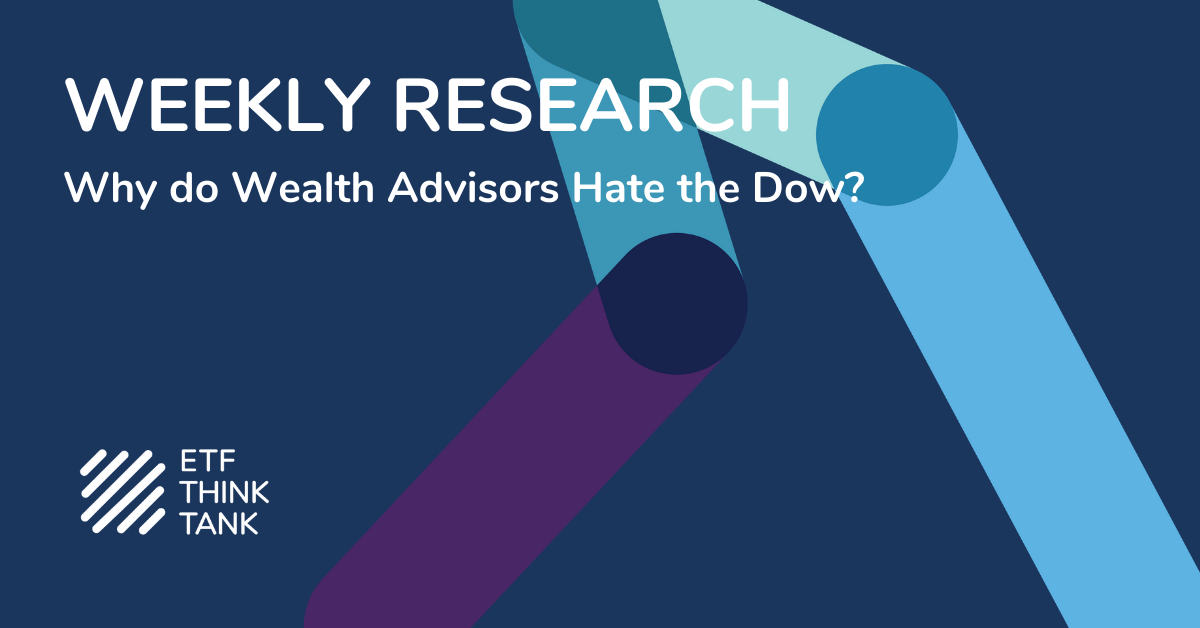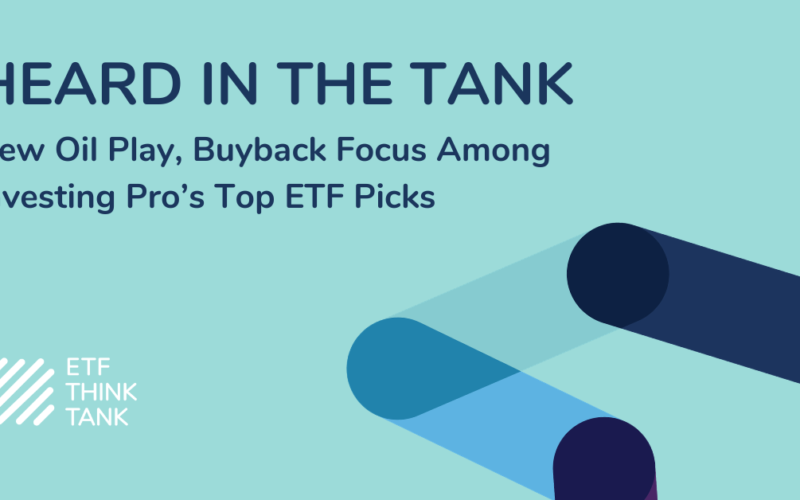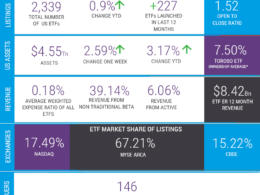Last week, the Dow Jones Industrial Average (Dow) made headlines for reaching all-time highs on both Monday and Tuesday. The implication is that the average investor is experiencing another spectacular year of returns. Unfortunately, the average global balanced portfolio is up about 1.8% even though the Dow is up 8.67%. In this week’s TETF.index update, we evaluate this disparity in returns and the role and implications for the ETF industry.

The “Marketing” Indexes are Winning the Performance Game
The ETFthinktank.com research team is no fan of the Dow. Within our ETF security master, we actually assign it almost no investment merit and categorize the Dow as a “Marketing” index. We wrote about the deficiencies of the Dow as an index in this critique of “smart beta”: Now, beyond our theoretical concerns with the Dow, the headlines about record highs have confused the average investor considering every other major asset class is negative YTD 2018. This dislocation drives difficult conversations between Wealth Advisors promoting rational diversification and individual investors chasing headlines.

The US is UP, Everyone Else is DOWN
The performance disparity between US large capitalization stocks and other asset classes is extreme in 2018. Within the large cap universe, the returns are obviously tilted toward growth and technology, which is illustrated in the chart above. Additionally, commodities and fixed income are producing negative returns YTD. Other ETF nerds like Meb Faber and Charlie Bilello have recently shared charts showing the massive disparity in returns geographically.


Now that we have looked back at performance, let’s consider more forward-looking indicators like fundamentals:

Rational Diversification
It is not terribly surprising that the indexes that have done the best have the most expensive valuations. The magnitude is the true surprise, since the P/E, P/B, and P/S of the Dow are consistently twice as expensive as the Emerging Markets. The fundamentals categorically support maintaining a diversified portfolio. That said, what is the role of the ETF industry within this phenomenon? First, let’s see if ETF asset flows are chasing these index returns.

The Role of ETFs
The chart above shows that although significant flows have gone into US large cap ETFs like VOO, IVV, and VTI, seven of the top ten flows have been into ETFs with negative or relatively muted returns. The flows suggest ETF investors continue to embrace the client alignment factor of diversification. But do ETFs share some of the blame for the performance and valuation discrepancies of the Dow? According to our ETFthinktank.comownership influence application, ETFs on average own about 8% of the market cap of all US companies. When the same formula is applied to the Dow, we see that ETFs own on average 5.73%. Therefore, ETFs substantially under own the equities in the Dow relative to the overall market.
Go Ahead and Hate the Dow, but Love the Market
From an academic perspective, it easy to hate the Dow; the index is really surviving to market the Dow Jones brand. From the perspective of Wealth Advisors, the headlines surrounding the all-time highs of US large caps at the expense of all other geographies and assets has put the value of diversification into question. This is the right time for Wealth Advisors to embrace the diversification and innovation growth factors of the ETF industry and prepare for the market to return to a position of rationality.












